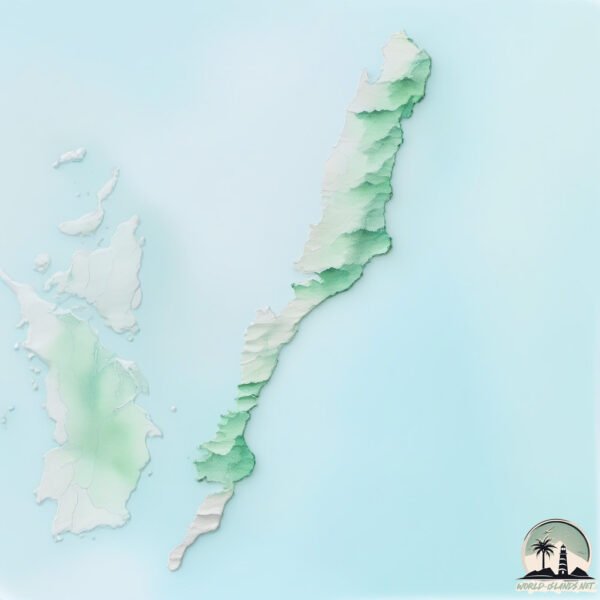Kai Besar

Welcome to Kai Besar, a Tropical island in the Banda Sea, part of the majestic Pacific Ocean. This guide offers a comprehensive overview of what makes Kai Besar unique – from its geography and climate to its population, infrastructure, and beyond. Dive into the details:
- Geography and Size: Explore the island’s size and location.
- Climate and Weather: Weather patterns and temperature.
- Topography and Nature: Uncover the natural wonders of the island.
- Infrastructure and Travelling: Insights on reaching, staying, and making the most of your visit.
- News and Headlines: Latest News.
Geography and size of Kai Besar
Size: 550.4 km²
Coastline: 253.9 km
Ocean: Pacific Ocean
Sea: Banda Sea
Continent: Oceania
Kai Besar is a Large Island spanning 550 km² with a coastline of 254 km.
Archipel: Melanesia – A subregion of Oceania in the southwestern Pacific Ocean, including countries like Fiji, Solomon Islands, and Vanuatu, known for their diverse cultures and languages.
Tectonic Plate: Banda Sea – A small plate in the eastern Indonesian region, known for complex interactions with the Australian and Pacific plates, leading to notable seismic and volcanic activity.
The geographic heart of the island is pinpointed at these coordinates:
Latitude: -5.57575476 / Longitude: 133.0455029
Climate and weather of Kai Besar
Climate Zone: Tropical
Climate Details: Tropical Rainforest Climate
Temperature: Hot
Climate Characteristics: This climate is typified by heavy rainfall throughout the year, high humidity, and consistently high temperatures, leading to lush rainforests and rich biodiversity. Seasonal temperature variations are minimal.
Topography and nature of Kai Besar
Timezone: UTC+09:00
Timezone places: Asia/Tokyo
Max. Elevation: 720 m
Mean Elevation: 242 m
Vegetation: Evergreen Broadleaf Forest
Tree Coverage: 57%
The mean elevation is 242 m. The highest elevation on the island reaches approximately 720 meters above sea level. The island is characterized by Plateau: Elevated flatlands rising sharply above the surrounding area, with a maximum elevation over 500 meters but a mean elevation less than 300 meters, forming unique highland areas on islands.
Dominating Vegetation: Evergreen Broadleaf Forest
Characterized by dense, lush canopies of broadleaf trees that retain their leaves year-round. These forests are typically found in tropical and subtropical regions and are known for their high biodiversity. Kai Besar has a tree cover of 57 %.
Vegetation: 11 vegetation zones – Exceptionally Diverse Island
Islands with more than ten vegetation zones are among the most ecologically rich and varied in the world. These islands are akin to miniature continents, boasting an incredible array of ecosystems. The sheer range of habitats, from high peaks to deep valleys, rainforests to deserts, creates a mosaic of life that is unparalleled. They are crucial for conservation and ecological studies.
Infrastructure and Travelling to Kai Besar
Does the island have a public airport? no.
There is no public and scheduled airport on Kai Besar. The nearest airport is Karel Sadsuitubun Airport, located 16 km away.
Does the island have a major port? no.
There are no major ports on Kai Besar. The closest major port is FAKFAK, approximately 277 km away.
The mean population of Kai Besar is 71 per km². Kai Besar is Gently Populated. The island belongs to Indonesia.
The name of the island resonates across different cultures and languages. Here is how it is known around the world: Arabic: جزيرة كاي الكبرى; Spanish: Kai Besar; Portuguese: Kai Besar; Chinese: 大卡伊島
Continuing your journey, Kai Kecil is the next notable island, situated merely km away.
Indonesia is classified as Emerging region: MIKT: Mexico, Indonesia, South Korea, and Turkey – Economies recognized for their development potential and emerging market status. The level of income is Lower middle income.
News – Latest Updates and Headlines from Kai Besar
Stay informed with the most recent news and important headlines from Kai Besar. Here’s a roundup of the latest developments.
Please note: The data used here has been primarily extracted from satellite readings. Deviations from exact values may occur, particularly regarding the height of elevations and population density. Land area and coastline measurements refer to average values at mean high tide.
